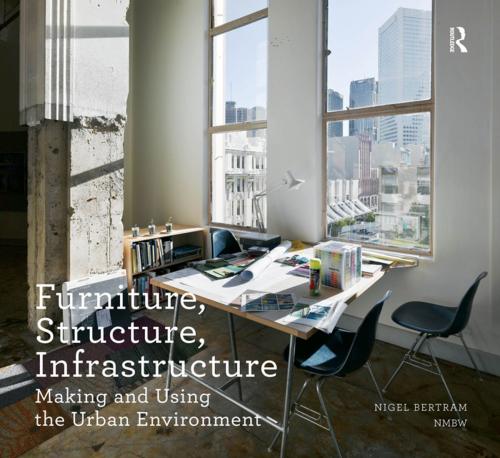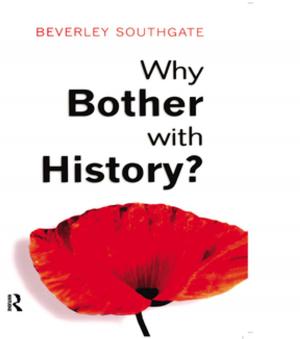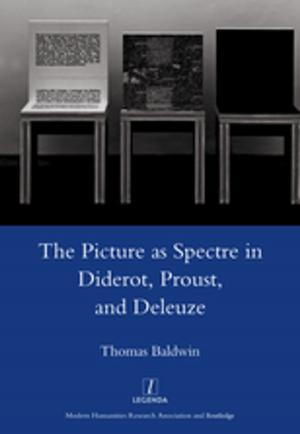Furniture, Structure, Infrastructure
Making and Using the Urban Environment
Nonfiction, Social & Cultural Studies, Political Science, Politics, City Planning & Urban Development, Art & Architecture, Architecture| Author: | Nigel Bertram | ISBN: | 9781351935173 |
| Publisher: | Taylor and Francis | Publication: | March 2, 2017 |
| Imprint: | Routledge | Language: | English |
| Author: | Nigel Bertram |
| ISBN: | 9781351935173 |
| Publisher: | Taylor and Francis |
| Publication: | March 2, 2017 |
| Imprint: | Routledge |
| Language: | English |
Observation and analysis are types of invention. They make things apparent which perhaps were invisible. By noticing, drawing and naming something we bring it into being. On the other hand, building and making can be thought of as analytical observations, pointing out what had not been so clear before and revealing the potential for other actions yet to occur. This book is a collection of urban research and architectural projects by award-winning architects Nigel Bertram / NMBW Architecture Studio, using observation as a design tool and design as an observational method. Through this process, a position on the making of architecture and on the role of architecture within the wider urban environment is established; embracing the full messy reality of the present, finding delight in the everyday and developing sensitivity to a range of found environments. By taking pre-existing conditions seriously, each project, architectural or analytical, large or small, becomes understood as the strategic renovation of a continuing state. This method of working operates by thinking simultaneously at different scales, from furniture to structure and infrastructure, searching for combinations of what might normally be separated into different categories, moving between the many small and ad-hoc actions of individuals to wider systems of collective organisation. Thinking about the effects of small moves on the larger urban field (and vice-versa), the role of unplanned or uncontrolled events in relation to the inward focus of design; thinking about the combinatory effect of what is newly made with what is already there, for example, enables architecture and the city to be understood in relative terms - in terms of relationships. Between people, groups of people, things, and parts of things, actions and groups of actions: urban architecture is the social arrangement of activity with the physical arrangement of large and small parts of its environment. But what people do also changes the place in which they do it. Considering different scales and types of relationships between individuals and groups, insiders and outsiders, expected and unexpected actions can be a way of crossing categories and establishing new relations. Breaking down components of a given situation or brief, before re-grouping, can be used to flatten and redistribute hierarchies embedded within. Similarly, finding ways of carefully observing things just as they are in the present, helps to see around the presuppositions of familiarity, without worrying about cause or effect. These aims, techniques and thoughts are presented through the discipline of the architectural project, where precise strategies must in the end be found to define an exact physical arrangement and materiality, usually at minimum cost. This collection of works researches the manner in which such precision can also generate openness and indeterminacy, allowing and provoking the engagement of others.
Observation and analysis are types of invention. They make things apparent which perhaps were invisible. By noticing, drawing and naming something we bring it into being. On the other hand, building and making can be thought of as analytical observations, pointing out what had not been so clear before and revealing the potential for other actions yet to occur. This book is a collection of urban research and architectural projects by award-winning architects Nigel Bertram / NMBW Architecture Studio, using observation as a design tool and design as an observational method. Through this process, a position on the making of architecture and on the role of architecture within the wider urban environment is established; embracing the full messy reality of the present, finding delight in the everyday and developing sensitivity to a range of found environments. By taking pre-existing conditions seriously, each project, architectural or analytical, large or small, becomes understood as the strategic renovation of a continuing state. This method of working operates by thinking simultaneously at different scales, from furniture to structure and infrastructure, searching for combinations of what might normally be separated into different categories, moving between the many small and ad-hoc actions of individuals to wider systems of collective organisation. Thinking about the effects of small moves on the larger urban field (and vice-versa), the role of unplanned or uncontrolled events in relation to the inward focus of design; thinking about the combinatory effect of what is newly made with what is already there, for example, enables architecture and the city to be understood in relative terms - in terms of relationships. Between people, groups of people, things, and parts of things, actions and groups of actions: urban architecture is the social arrangement of activity with the physical arrangement of large and small parts of its environment. But what people do also changes the place in which they do it. Considering different scales and types of relationships between individuals and groups, insiders and outsiders, expected and unexpected actions can be a way of crossing categories and establishing new relations. Breaking down components of a given situation or brief, before re-grouping, can be used to flatten and redistribute hierarchies embedded within. Similarly, finding ways of carefully observing things just as they are in the present, helps to see around the presuppositions of familiarity, without worrying about cause or effect. These aims, techniques and thoughts are presented through the discipline of the architectural project, where precise strategies must in the end be found to define an exact physical arrangement and materiality, usually at minimum cost. This collection of works researches the manner in which such precision can also generate openness and indeterminacy, allowing and provoking the engagement of others.















